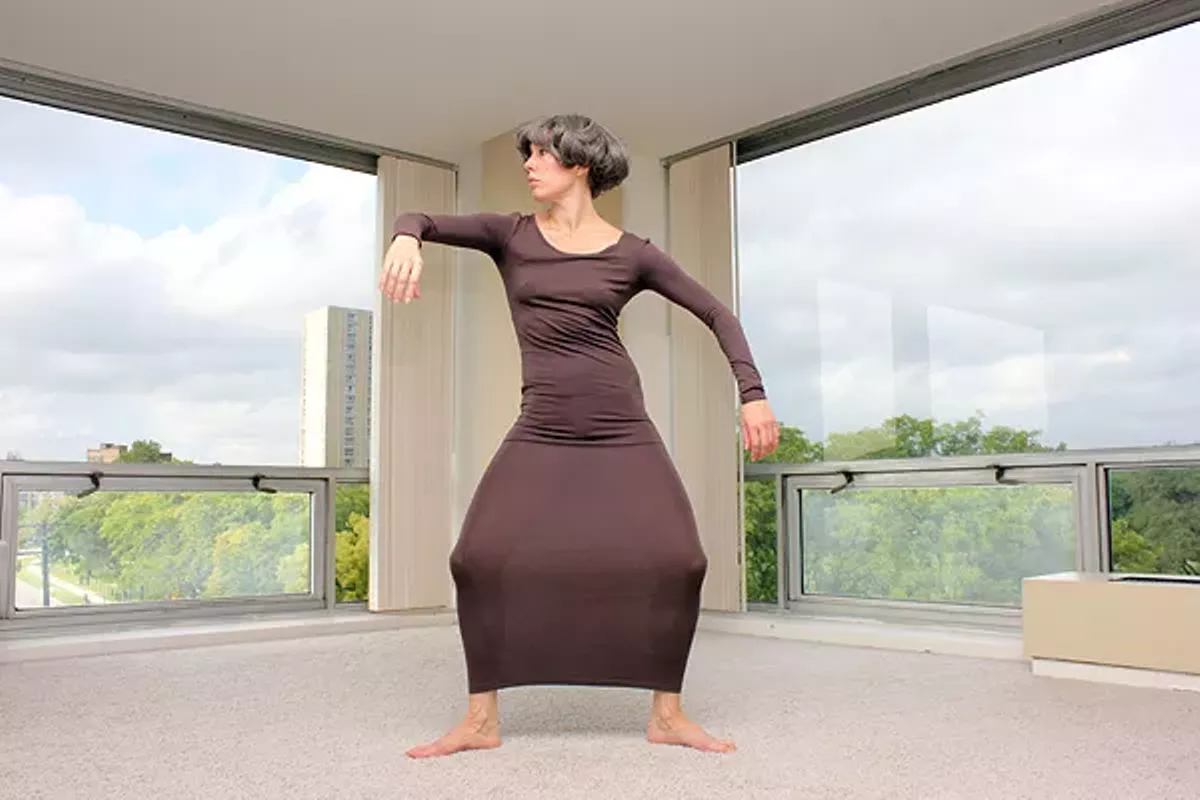You've heard that old saying about "dancing about architecture," right? In a way, Biba Bell does that. Bell is gearing up for a series of performances that will be held in and influenced by a strange space — her Detroit apartment.
We met Bell over coffee at Trinosophes, but when the music proved too loud she suggested we simply sit on the floor in the adjacent empty performance room to continue our interview. We spoke about why dancers love floors, Detroit's little-known Mies van der Rohe-designed village, and how Bell found her muse.
Metro Times: How did you find your niche?
Biba Bell: I was really tired of theaters — I was tired of politics, and the fact that you would rehearse for six months and show something three times. I was tired of the sort of unsustainable aspects of it.
I also always have been really attracted to architecture. My dad built all the houses that I've lived in. One of his main interlocutors is Frank Gehry, so I grew up in these strange, very modern environments. I also thought it was very isolating being in the dance community. I feel like dance can be all over the place. It's really starting to show up in other places, like museums and galleries. But I feel that dance is very promiscuous, and that's one of its strengths.
MT: When did you start bringing your performances into alternative spaces?
Bell: I moved to New York, and then started working with a performance trio called MGM Grand (Modern Garage Movement). We would make a dance, and then we would organize a tour to try and perform it between one and three times a day, for six weeks. We would set it up so we would basically say yes to anything and everything. We played galleries, theaters, and museums. We would also do backyards. We'd do weird alleys. We did libraries, spas, wineries — the packing shed of a farm. People would just be like, "I have this space, I think it'd be great." We were really self-sufficient, like a band. We'd bring our amps, our lights. We're always ready to go.
MT: Was it an experiment to prove that architecture affects the performance? Or did you already know that to be true?
Bell: I definitely believed it to be true. It was one of the elements that I was personally most interested in. One of the most poignant elements in dance is the floor — dancers fetishize the floor. We spend a lot of time with our floors. We lay on them for hours. In my apartment, it's all on the floor. I don't have any furniture. Going on a tour like that, the first thing we had to figure out was the floor. When you train, you're used to a sprung floor.
MT: How do you expect your apartment to influence your performance?
Bell: My audience in my apartment piece caps at 16 people a performance. That's a very different experience for the audience, and also for me. I don't have to fill a house. You have these huge theaters here, and these smaller DIY spaces, but there's not really a midsize black box where dance is happening all the time in the city. I thought this was a good way to explore what the audience could be.
MT: Where'd the idea come from?
Bell: The apartment piece came out of a trip that I took to the Henry Ford Museum, seeing the Buckminster Fuller "Dymaxion House." I really wanted to do a piece there. I wrote a proposal for the curator, and they were like, "We don't think this is the kind of thing that we are going to program here."
MT: Is that the modular, "home of the future" thing?
Bell: Yeah, it's circular, there's all these panorama windows. You look in, and it looks like a little stage set. Later, I was like, "Wait, there's a Mies van der Rohe village in downtown Detroit, and nobody talks about it?" So that's when I knew I had to rent an apartment there. That was almost two years ago.
MT: What is it about the space that intrigues you?
Bell: You have this sort of classic modernism of domestic space, which is also like the woman's workplace is at home. So what is that doing? There's how it frames the figure, and how it also transforms that figure socially. There's kind of an inside and outside. Are we looking out? Are they looking in? The public-private kind of element is really kind of strange and different. The first installment for now is solo, just me. There's a woman in the house.
Learn more about Biba Bell's upcoming performances at bibabell.com.








